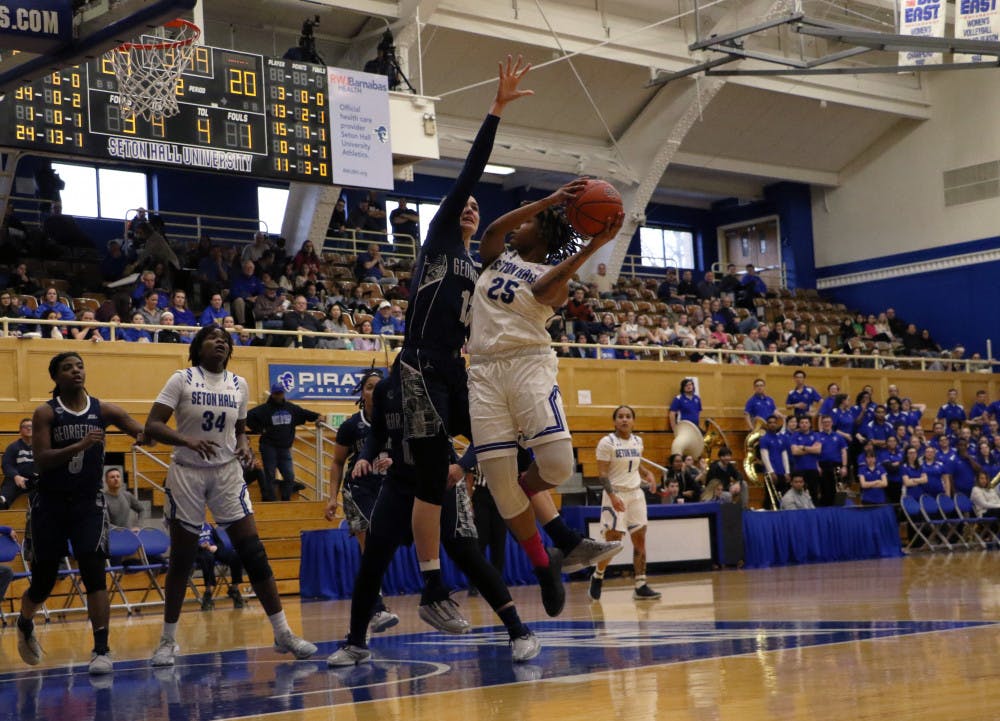Seven members of Seton Hall's ROTC program fought through 26.2 miles of sand, mountains and terrain in 80-degree New Mexico weather on St. Patrick's Day.
This is the first time that SHU ROTC managed to send competitive teams to the Bataan Memorial Death March, according to Cadet Peter Guarraci, 29, an Operation Iraqi Freedom veteran of Elizabeth, N.J.
The five-man running team earned first place in its category and second place overall in the annual Death March, completing it in four hours and 24 minutes.
"That got an unusual reaction, people usually just walk the thing - they don't run it all," Guarraci said.
"A lot of people say it's more than race," Guarraci said. The Bataan Memorial Death March honors men that survived what Guarraci called "one of the most cruel situations that any war could ever produce." Soldiers that had to do the march in April 1942 were forced to go 90 miles without water or food, and many lives were lost.
"The most beautiful and powerful, moving aspect was the day before the race when we got to meet some surviving vets of Bataan," Guarraci said. "It's a privilege to get some out there, but we had nine out there and to see those individuals, some in wheel chairs, stand up ... was one of the most emotionally powerful things in the world."
Eight individuals out of the 12-man Bataan team currently attend Seton Hall. All members are a part of Seton Hall ROTC.
Fundraising and training for this event began in October, according to Guarraci.
Lt. Colonel Diaz, professor of military science, Ironman and veteran of Operation Iraqi and Enduring Freedom was responsible for training and preparing team members for this brutal event, Guarraci said.
The marathon, according to Guarraci, is one of the toughest in the world. "The fact that we're from New Jersey already put us at a disadvantage," he said. "The altitude and terrain is not like it is here. Take for example Sandy Hook on the Jersey shore - try running that and a couple of mountains in upstate New York to even try to come close."
The running team distance trained through winter break, the coldest months New Jersey had, from December to February. "We started in 18 to 15 degree weather, then went to 30 or 40 degrees and in a two day span went to facing sand and 80 degree temperatures, and it's just insane. That was the problem for us, so we put in 30 to 35 miles a week," Guarraci said.
Guarraci credited the team's success, with all members, even those who marched, placing within the top 10 percentile of all participants, to Diaz's strict training.
"I never sat here and said this is our five-man team," Guarraci said. "We always trained together, always finished together - that always the case for this."
The team running shirts had the quote "Pain is temporary, quitting lasts forever."
"We used this quote to honor the survivors of Bataan, who had no choice but to deal with unimaginable pain or face certain death if they were to quit," he explained.
Guarraci brought up the idea of fundraising for the race and from there he and another member started fundraising the full amount for tickets and everything for the team until January.
Guarraci was deployed with Diaz during his time in Iraq.
"It was very emotional for us, looking at these men who did so much just to be there," Guarraci said. "The humility and strength they had to get up and show their appreciation for us just to get up and salute us was beyond words. It was a very powerful thing and its serves as more inspiration to get the race over and do our best. It's more than a race and more motivation than I'll ever need. It was beautiful."
Charlotte Lewis can be reached at lewischa@shu.edu.





